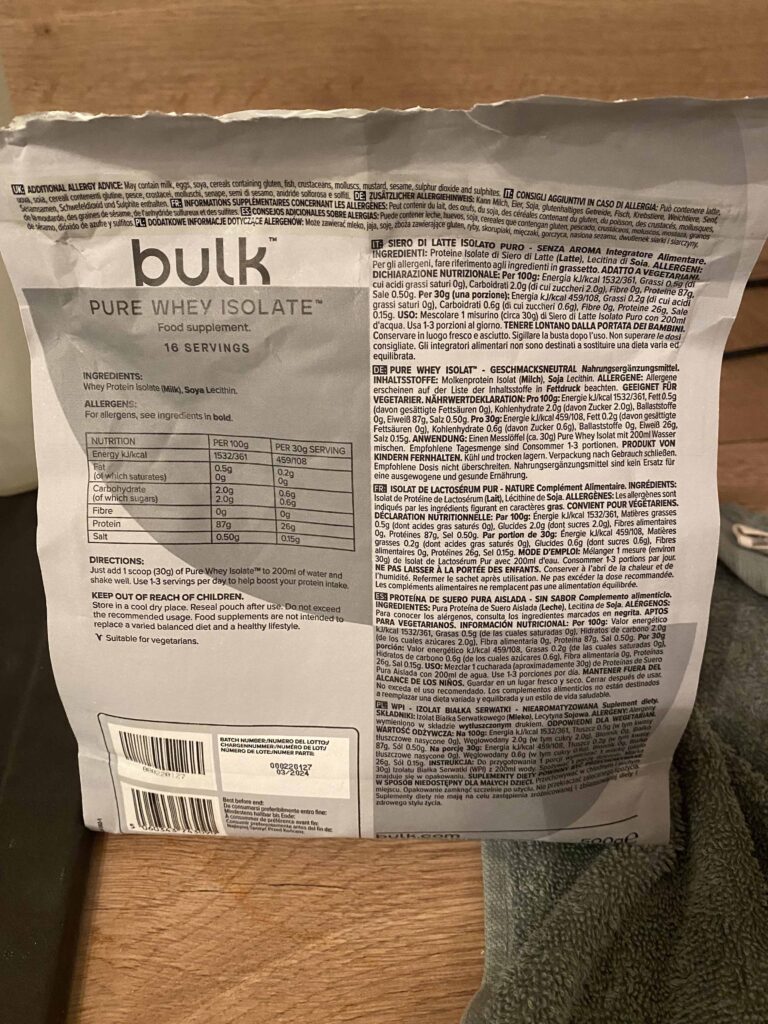Food is one of the 5 pillars of Longevity, and arguably the 2nd in terms of importance (right after physical activity). However, the Media is poisoning us with conflicting information about nutrition. All this massive data is either just noise or bad science, if not outward false information. You only need a couple of minutes to cut through all this BS and understand the fundamentals.
Since I can remember myself, every time when I’ve heard or read of nutrition, it was complex, weakly documented, and chaotic. And therefore lacking any interest. If you want to dive into this and study it for good, it’s indeed terribly complex, and honestly, my conclusion is that we know really little about it. But for most of us who don’t want to become professional nutritionists, things don’t have to be complicated. In fact, they’re dead simple. Read below!

The basics
Food is composed of Macro-nutrients and Micro-nutrients. The Micro-nutrients are nutrients that come in very small quantities, such as Vitamins and Minerals (<0.1% of food). The Macro-nutrients are the categories of nutrients that we find in food in bigger quantities (>0.1%).
The Micro-nutrients
What you need to know about micro-nutrients is :
-they come in many forms and shapes, and there’s no point in listing them all.
-you can find them mostly in vegetables and fruits. Depending on your specificity, you may need to take supplements to compensate for lack of different vitamins (for example B complex, or Mg, etc …).
The Macro-nutrients
There are 5 categories of Macro-nutrients:
-fats. Fats are very energy-dense. During intense or prolonged efforts, fats can break down and generate energy for the body. Fats are divided into 3 categories, saturated, mono-unsaturated and poly-unsaturated, but more about this in a future blog post, no need to over-complexify at this stage.
-carbohydrates. Sugar and starch are carbohydrates. Depending on how good your body is to process these, you may be better off avoiding carbohydrates as much as possible. Carbohydrates are quickly digested and released into your blood in the form of glucose. This mechanism, repeated over and over again during decades, may end up destroying your energy sensing mechanisms, and ultimately creating insulin resistance and type 2 diabetes. This is what we’re trying to avoid as much as possible with a CGM.
-proteins. Proteins are very important, because they’re the building blocks of your muscles (among others).
-fiber. Fiber is not a nutrient per se, because the body does not process it, but it’s very useful to the digestive system and is present in large quantities in the foods we eat.
-alcohol. It may come as surprising, but alcohol is a macro-nutrient. It is almost as energy-dense as the carbohydrates. It may be a social enhancer, but remember that while your body can cope with reasonable quantities of alcohol, unlike what you’ll see in articles here and there, it does NOT improve your health. So don’t believe what different lobbies tell you, don’t lie to yourself.
Your goal
So now that you know that food is Micro-nutrients (vitamins) and Macro-nutrients (fats, fiber, carbohydrates and protein), the next step is to understand what you’re aiming for when it comes to daily food intake:
– a daily overall energy intake of roughly 2000-2500 kcal (kilocalories) for men, and 1500-2000 kcal for women. Each macro-nutrient (except fiber) has a caloric value.
– a daily protein intake of 2g / kg (that means if you’re 70kg like me, you’d need 140g or protein / day). This is above the recommended “official” doses of 0.5 – 1g/kg, but recent studies show that this standard daily dose is absolutely insufficient.
– depending on how your body reacts to carbohydrates, you want to limit these, because as explained earlier they turn into glucose in your blood and you want your glucose levels to stay ideally at an average level below 100 ml/dl, with no spikes above 140 mg/dl and a GV (glucose variability) of less than 15%. You can measure this by wearing a CGM. There’s no general guideline as to how many carbohydrates to eat, you’ll just need to adjust it depending on your own body.
– very interestingly, most processed foods are unhealthy even when they contain the right macro-nutrients in the right proportion, so your aim is to eat as many unprocessed foods as possible. Eat vegetables you cook yourself, eat a fruit and not an fruit juice, etc. Not all the processed foods are bad (for example the Whey Protein), but most of the time, it’s easier to avoid them.
Putting this into practice
I’ve been putting all these guidelines in practice for the last couple of weeks, and I must admin it’s awkward and strenuous, but worth it to my eyes.
So it all starts with carefully reading the notice on every food package, where you’ll have the macro-nutrients quantities for each product, an example below :

The plan is to add all the macro-nutrients of the different foods you eat, do the math for a couple of days at least, and make sure that numbers add up to roughly the desired quantities (in terms of calories and protein intake, see above).
If you do this right, you end up with something similar to this:

In my situation, you can see that I’m roughly at 2000 kcal / day, which is ok, and around 120g of proteins / day, which is slightly sub-optimal (I should be at 140g). The quantity of carbohydrates is roughly between 50 and 100g / day, which is the maximum amount that my body can bear without releasing glucose in excess in my blood. Remember for you it may be more (lucky you!) or less.
On the longer term, once you get an intuition of what to eat and how much, you can discard this process of measuring everything, but first you need to get a sense of how this is working.
Indeed, later on, you’ll be able to monitor your food intake in a much more comfortable way, that is through measuring how much you weight on a monthly basis, and how much fat and lean mass you have with a DEXA scan every 3 months or more (but more on this in a future blog post).
A couple of practical observations
You’ll see that eating 2g of protein / kg / day is very hard (especially when you limit the overall energy). This is why I take some form of concentrated protein shake, called “whey isolate”.


I was also terribly surprised to notice that eating healthy in restaurants (even the more sophisticated French restaurants) is close to impossible. Indeed everything is filled with sugar and starch (sauces, soups, french fries, fruit juices, even gazpachos!). I’m not saying that it is absolutely impossible, and I’m sure in Paris for example, there may very well be some niche restaurants where you can eat a longevity-friendly meal, but it’s not mainstream, it’s not practical, it’s not the snack in the corner of your street, you need to be a connoisseur.
Another interesting observation is how marketing is distorting the message on healthy foods. In almost every restaurant you’ll have some “veggie” meal, and most diet-sensitive people will openly prefer that and think it’s healthy. It’s false, vegetarian food does not necessary mean healthy food (sugar and starch is vegetarian), and meat does not necessary mean unhealthy food (poultry and fish are great for health).
Wrap up
In a nutshell, here’s what you need to remember:
– you need 2000-2500 kcal / day for men, and 1500-2000 kcal / day for women
– you need roughly 150g of protein if you’re a man, 100g if you’re a woman
– you need to keep carbohydrates and processed foods as low as possible
– eating various vegetables and fruits will give you the necessary micro-nutrients
That’s all! Isn’t that easy?
PS1. Please note that my goal is to share with you what I discover, I’m not a doctor nor a nutritionist, and most likely, the article contains some approximations which would sound dissonant to an expert. However, I want to help as many people as possible understand the most fundamental mechanisms of nutrition, and provide them with insights that are easy to understand and apply today.
PS2. I hear some of you think outloud “Where’s the pleasure of eating delicious foods? French specialties? Exotic tastes?”. While I totally respect this point of view, the food industry has evolved in the last century to optimize for price, volume, regularity in production, and palatability, not long-term health. While a mix between both may be possible (healthy + tasteful), you really need to understand the rules of the game, and adjust accordingly.